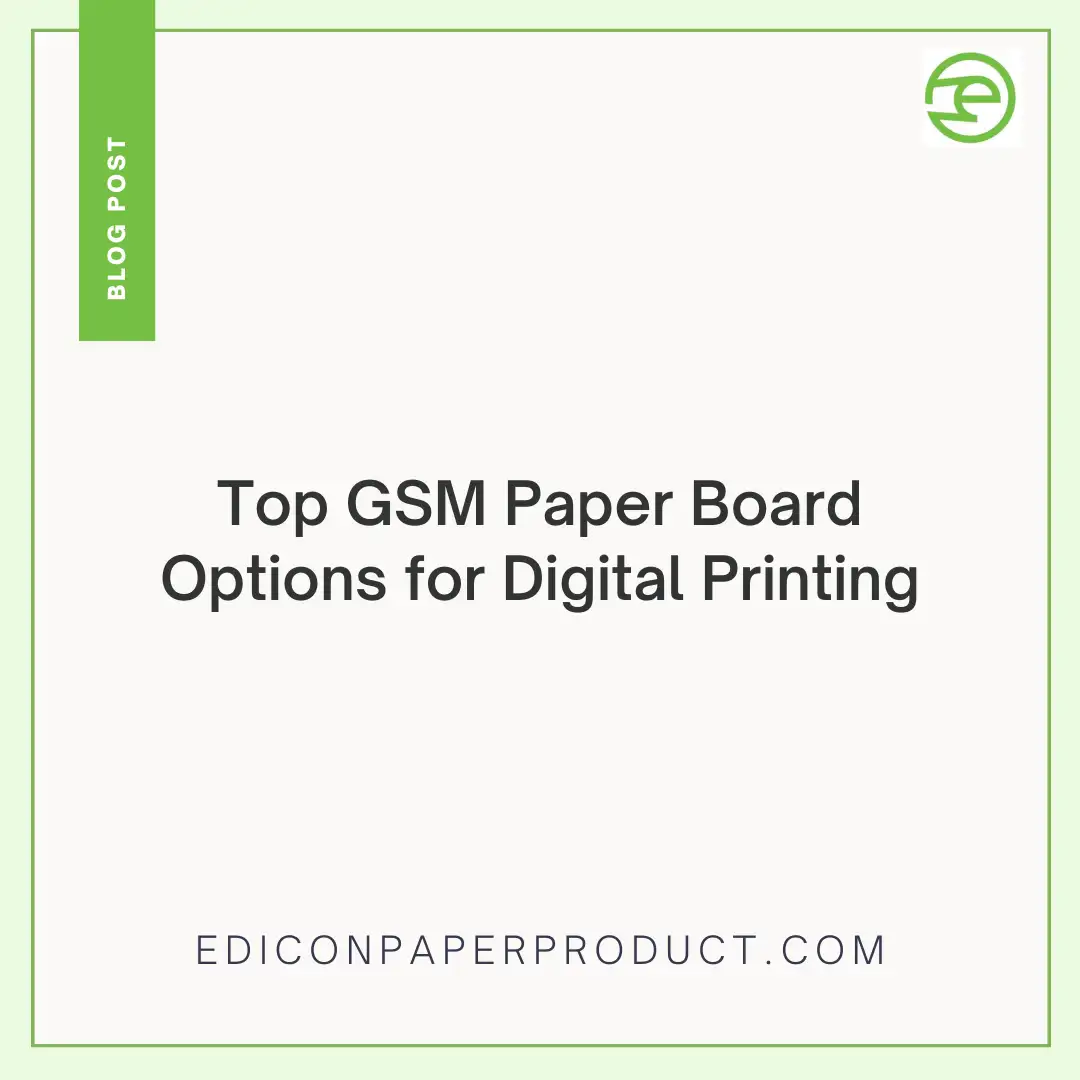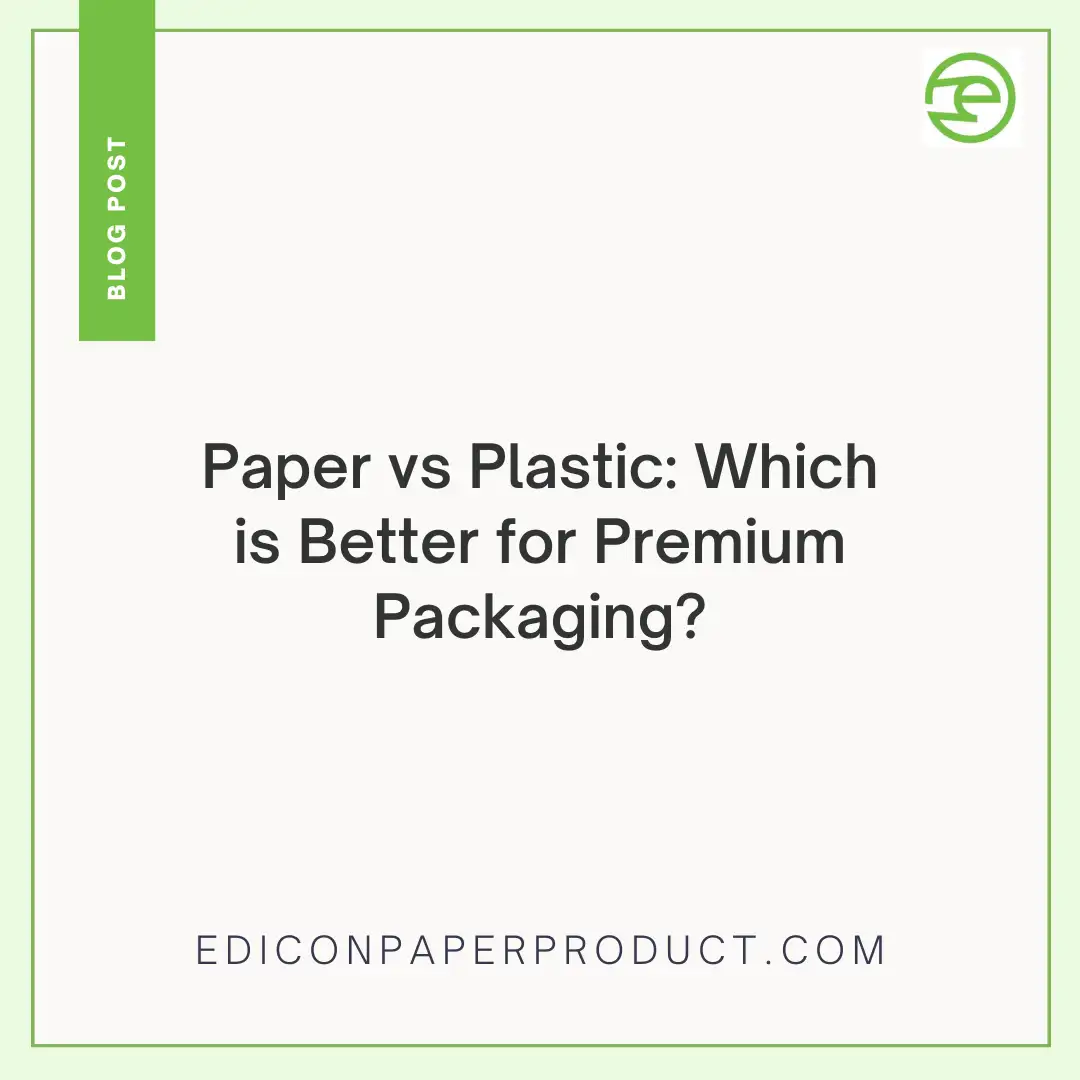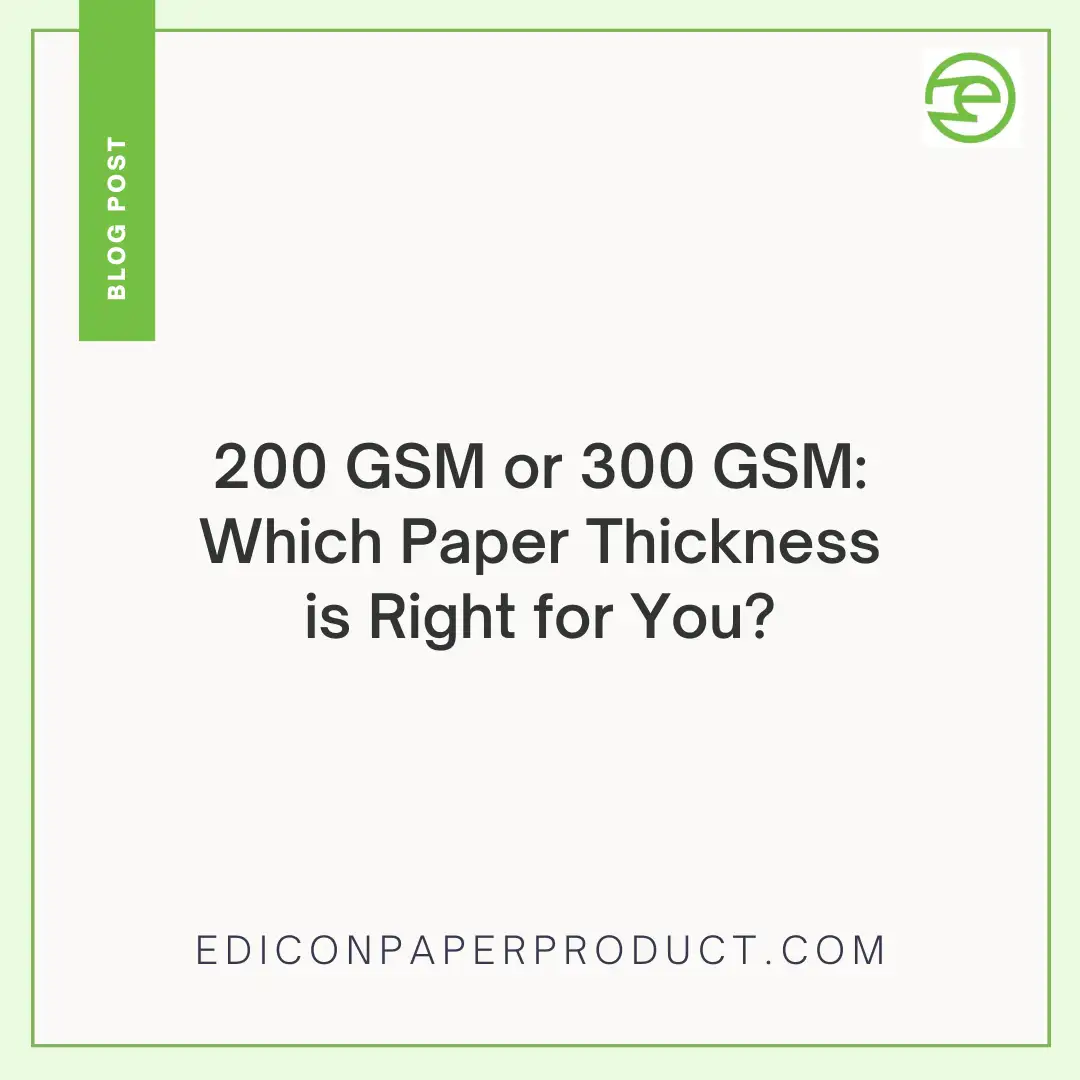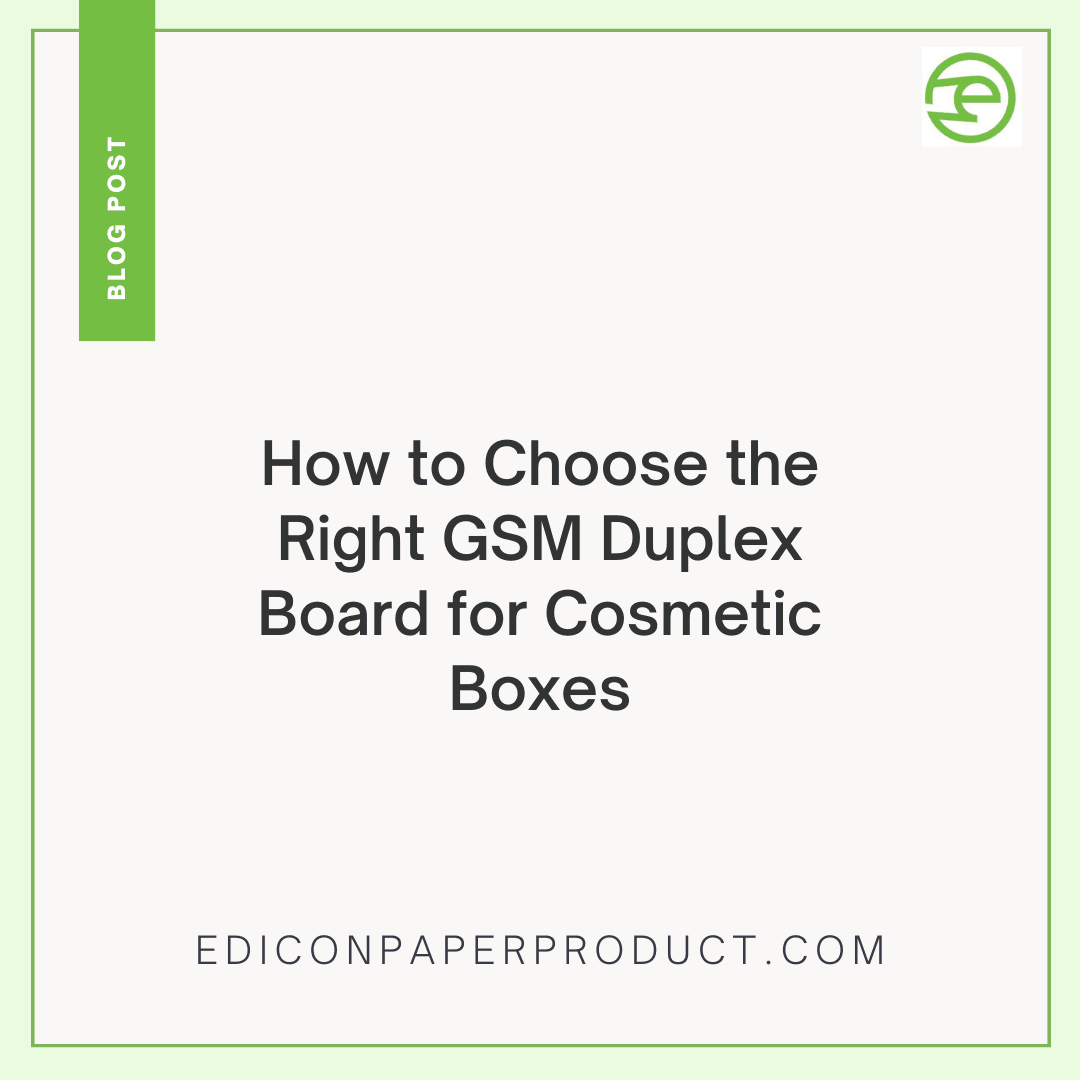Is Coated Duplex Board the Best Choice for Jewelry Boxes?
Introduction
Imagine receiving a delicate necklace or a sparkling ring in a plain, flimsy box. The first impression is immediately underwhelming. Now picture the same jewelry in a well-crafted, sturdy box with a smooth, pristine surface and elegant design. This first interaction can set the tone for your brand perception. In the jewelry industry, packaging plays a vital role not just in protecting the product, but in conveying luxury, attention to detail, and trustworthiness.
Among the various materials available, coated duplex boards have emerged as a popular choice for jewelry boxes. Offering a balance of print quality, strength, and cost-efficiency, it provides jewelers with the versatility to create visually appealing, protective packaging. In this guide, we’ll explore why a coated duplex board works well, examine the differences between grey back and white back options, compare it with alternative materials, and provide tips for choosing the right supplier. By the end, you’ll understand whether this packaging solution is the best fit for your jewelry business.
What is a Coated Duplex Board?
Understanding the Basics of Duplex Board
A duplex board is a type of paperboard that is manufactured with two layers. The top layer is smooth and coated, which provides a premium finish suitable for high-quality printing. The reverse side, often called the grey back board, is left uncoated, giving the material strength and rigidity. This combination makes a duplex board a versatile option for various packaging needs.
Coated Duplex Board, specifically, refers to a duplex board with a coated surface on the top side, available in either white back or grey back variants. This coating allows for vibrant graphics, glossy finishes, and a professional look, making it ideal for high-end product packaging such as jewelry boxes.
Expert Insight: Standard coated duplex boards for jewelry packaging usually fall in the 300-400 GSM range, balancing durability with cost-efficiency while providing a smooth surface for premium print finishes.
Types of Coated Duplex Board for Packaging
![]()
Grey Back vs. White Back: Which One for Jewelry?
A. Coated Duplex Board Grey Back
Coated duplex board grey back features a white-coated front for printing, while the back is grey or brown, typically made from recycled fibers. This makes it an economical and eco-friendly option.
• Print Quality: High-quality graphics are possible on the coated front surface.
• Applications: Suitable for jewelry boxes where the interior is not visible or when the box is sealed.
• Sustainability: High recycled content appeals to eco-conscious brands.
B. Coated Duplex Board White Back
The white back variant has a premium finish on both sides, ideal for luxury packaging.
• Appearance: Both the interior and exterior are smooth and visually appealing.
• Applications: Recommended for boxes with visible interiors or high-end presentation.
• Cost: Higher pricing due to material quality and bleaching process.
C. Comparison Table
| Feature | Grey Back | White Back |
|---|---|---|
| Cost | Economical | Premium |
| Print Quality | High on front | High on both sides |
| Sustainability | Recycled fibers | Often virgin fibers |
| Best Use | Mass-market, sealed boxes | Luxury or visible interior boxes |
By choosing the right type, jewelers can align packaging aesthetics with brand positioning while optimizing costs.
Why Coated Duplex Board Works Well for Jewelry Boxes
![]()
What Makes Coated Duplex Board Ideal for Jewelry Packaging?
• Excellent Printability: The coated surface allows vibrant graphics, sharp text, and accurate color reproduction, giving jewelry boxes a polished, professional look. Logos, patterns, and brand designs are easily replicated, enhancing brand identity.
• Structural Strength: Despite being lightweight, the coated duplex board provides adequate rigidity to protect delicate jewelry pieces during handling, storage, and shipping. It resists bending and crushing, ensuring that products reach customers intact.
• Cost-Effectiveness: Compared to alternatives like rigid chipboard or wooden boxes, duplex boards offer similar protection and aesthetic appeal at a fraction of the cost. It is especially suitable for bulk orders without compromising quality.
• Versatility: Available in multiple thicknesses, duplex boards can be customized with embossing, foiling, UV coatings, or lamination. It works with various box styles, including tuck-end, sleeve, or flip-top boxes, making it adaptable for different product lines.
• Eco-Friendly Options: High recycled content options are available, making duplex board packaging recyclable and appealing to environmentally conscious consumers. Brands can showcase sustainability without sacrificing design or functionality.
How to Choose the Right Coated Duplex Board Supplier
What Should You Look for in Coated Duplex Board Suppliers?
• Quality Certifications: Look for ISO standards and FSC certification to ensure sustainable sourcing and quality. Food-grade certifications may be needed for certain applications.
• GSM Range Availability: Suppliers should offer a variety of thicknesses (typically 230–450 GSM) to match product weight and box style.
• Minimum Order Quantities: Flexible MOQs allow you to order small batches for prototypes and large quantities for bulk packaging.
• Customization Capabilities: Ensure they provide coating options, color matching, and special finishes like embossing or lamination.
• Delivery and Service: Reliable lead times, sample availability, and responsive support are essential for smooth operations.
Best Practices for Jewelry Packaging Design
• Choose GSM based on jewelry weight to ensure box durability.
• Consider coatings like UV, matte, or gloss lamination for a premium feel.
• Include inserts to protect delicate pieces.
• Select grey back or white back based on whether the interior is visible.
• Highlight eco-conscious messaging if using recycled content.
Design Enhancements: Embossing, metallic foiling, and spot UV can elevate the unboxing experience and reinforce brand identity.
Real-World Applications & Success Stories
Coated duplex board is widely used across the jewelry sector:
• Fashion Jewelry Brands: Affordable packaging without compromising appearance.
• E-commerce Stores: Lightweight, shipping-friendly boxes that protect delicate products.
• Boutiques: Customizable boxes aligning with brand identity.
• Gift Sets: Cost-effective multi-piece packaging.
These scenarios demonstrate duplex board’s adaptability and functional value across markets.
Conclusion
Summary: Coated duplex board offers excellent printability, structural strength, versatility, and cost-efficiency for jewelry boxes. While not ideal for every ultra-luxury application, it provides a balanced solution for mid-range to premium products.
Final Verdict: For jewelers seeking quality packaging that supports vibrant branding, durability, and sustainable options, coated duplex board is an excellent choice.
Call-to-Action: Evaluate your specific packaging needs, request samples, and work with trusted suppliers such as Edicon Paper Products to create jewelry boxes that protect products and elevate your brand.
FAQ
1. What GSM duplex board is best for jewelry boxes?
300–400 GSM is ideal for standard jewelry packaging.
2. Can coated duplex boards be used for luxury jewelry?
Yes, especially the white back variety with premium finishes.
3. Is duplex board eco-friendly?
Yes, many options contain high recycled content and are fully recyclable.
4. How does a coated duplex board compare to velvet jewelry boxes?
Duplex board is best for outer packaging, while velvet boxes serve as premium interiors.
5. Where can I source quality coated duplex boards in India?
Certified suppliers like Edicon Paper Products offer reliable options.






